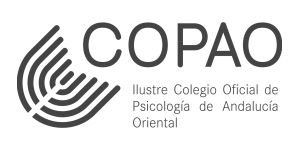Speaker

CRISTINA LARROY
COMPLUTENSE UNIVERSITY OF MADRID. SPAIN
Cristina Larroy holds a Ph.D. in Psychology from the Complutense University of Madrid (UCM), is a Professor in the Department of Clinical Psychology at the same university, and Director of PsiCall UCM (Immediate Telematic Psychological Assistance Service for UCM students). Additionally, she is the director of the Master’s Program in Clinical Psychology: Professional Practice at UCM and vice president of the Spanish Society of Child and Adolescent Clinical Psychology. She has previously served as the Director of the Department of Clinical Psychology at UCM and Director of the University Clinic of Psychology at UCM.
Her most relevant research line focuses on Clinical and Health Psychology, especially regarding women and young people: epidemiological studies, assessment, prevention, intervention, and health promotion at early ages. In recent years, she has also been working on issues related to telepsychology and new technologies applied to the assessment and intervention of mental health problems.
She is the author of numerous scientific and popular science books, chapters, and scientific articles, as well as over 200 contributions to national and international conferences.
Children and youth in vulnerable situations: from research to practice

This abstract explores the relationship between vulnerability and psychological symptomatology in two populations: children up to 12 years old and university youth (18 to 21 years old). Vulnerability can be understood as a set of predisposing factors, which include individual characteristics, family and social contexts, as well as traumatic situations experienced. Children and youth with histories of adversity, such as abuse, neglect, violence, or other potentially traumatic situations, tend to show greater susceptibility to developing anxious-depressive symptoms and PTSD or complex PTSD.
Furthermore, factors such as resilience, social support, and coping ability play a crucial role in moderating this relationship. The presence of a stable family environment and support networks can mitigate the negative effects of trauma, while the absence of these resources can exacerbate symptomatology. This analysis underscores the importance of identifying children and youth at risk and implementing early interventions that address both vulnerability and symptoms of distress or psychological disorder. In conclusion, understanding the interaction between vulnerability and symptomatology is essential to develop effective prevention and treatment strategies, thereby promoting the emotional and psychological well-being of children and youth in vulnerable situations.
The first two contributions explore the relationship of different types of vulnerability with the psychological symptoms presented by university youth who attend PsiCall UCM, an online psychological care service. The first includes differentiation by gender, both of the type of vulnerability and symptomatology. The second examines the relationship between the type of vulnerability and the frequency and duration of care received.
The third and fourth presentations describe the therapeutic evaluation and intervention process carried out with a group of children from Paiporta, as well as the results of this process.












